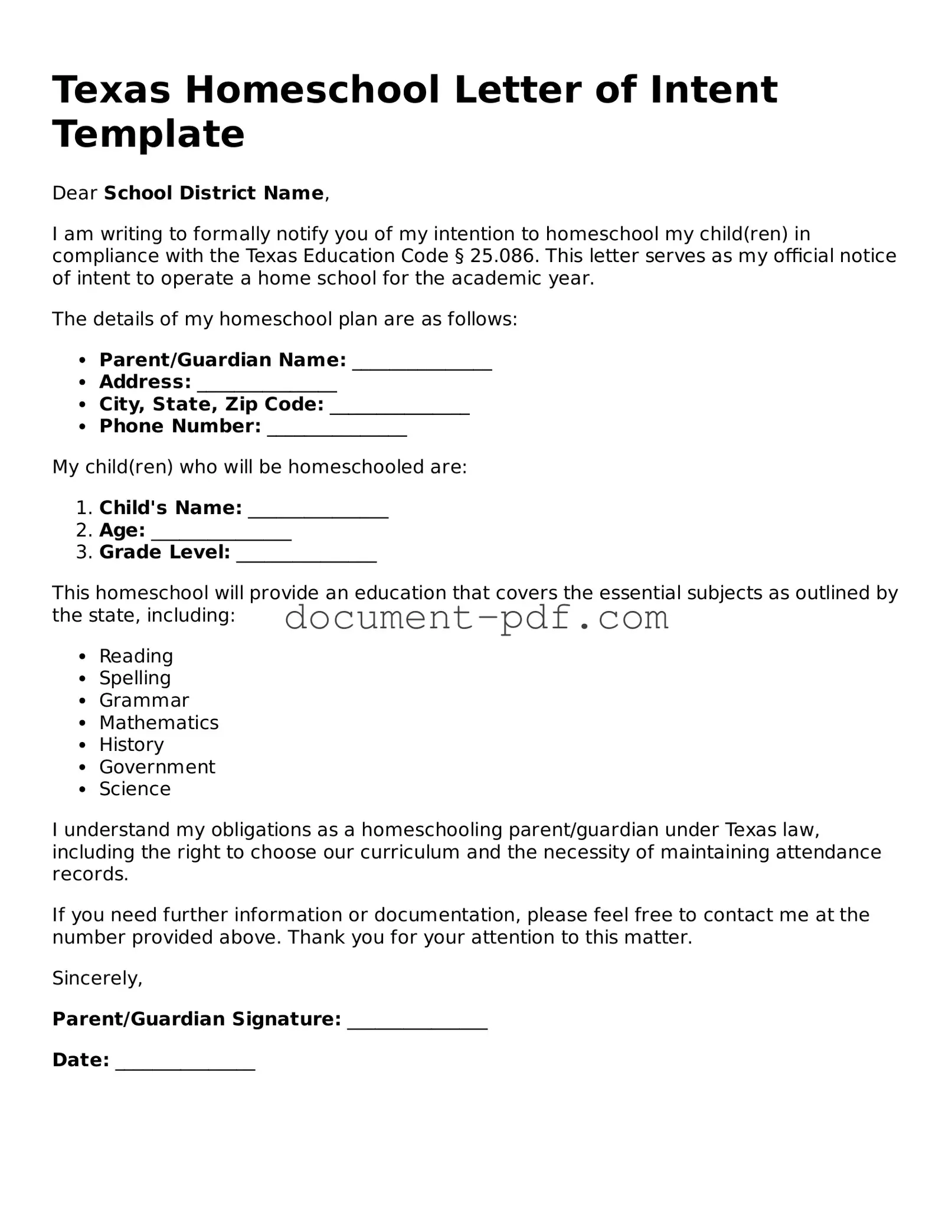Texas Homeschool Letter of Intent Template
Dear School District Name,
I am writing to formally notify you of my intention to homeschool my child(ren) in compliance with the Texas Education Code § 25.086. This letter serves as my official notice of intent to operate a home school for the academic year.
The details of my homeschool plan are as follows:
- Parent/Guardian Name: _______________
- Address: _______________
- City, State, Zip Code: _______________
- Phone Number: _______________
My child(ren) who will be homeschooled are:
- Child's Name: _______________
- Age: _______________
- Grade Level: _______________
This homeschool will provide an education that covers the essential subjects as outlined by the state, including:
- Reading
- Spelling
- Grammar
- Mathematics
- History
- Government
- Science
I understand my obligations as a homeschooling parent/guardian under Texas law, including the right to choose our curriculum and the necessity of maintaining attendance records.
If you need further information or documentation, please feel free to contact me at the number provided above. Thank you for your attention to this matter.
Sincerely,
Parent/Guardian Signature: _______________
Date: _______________
